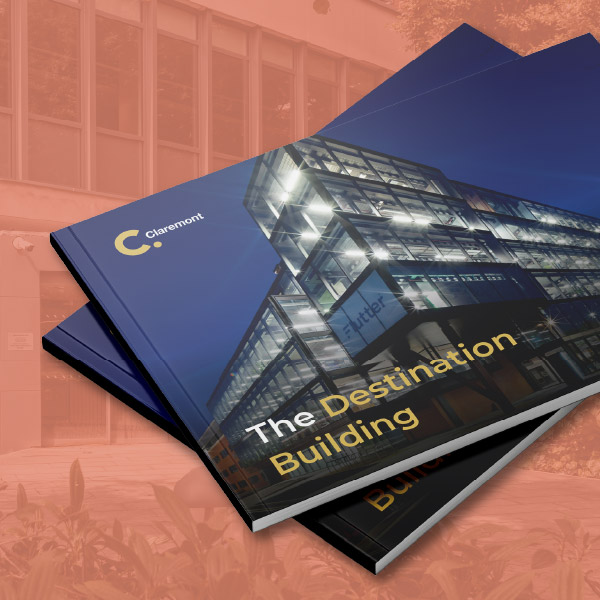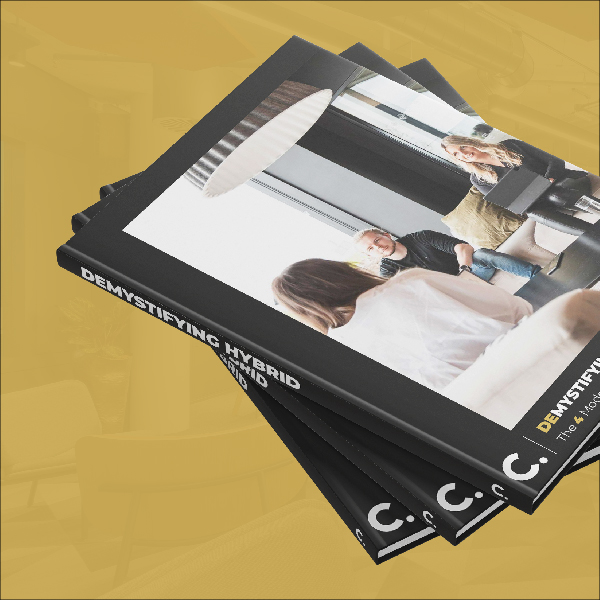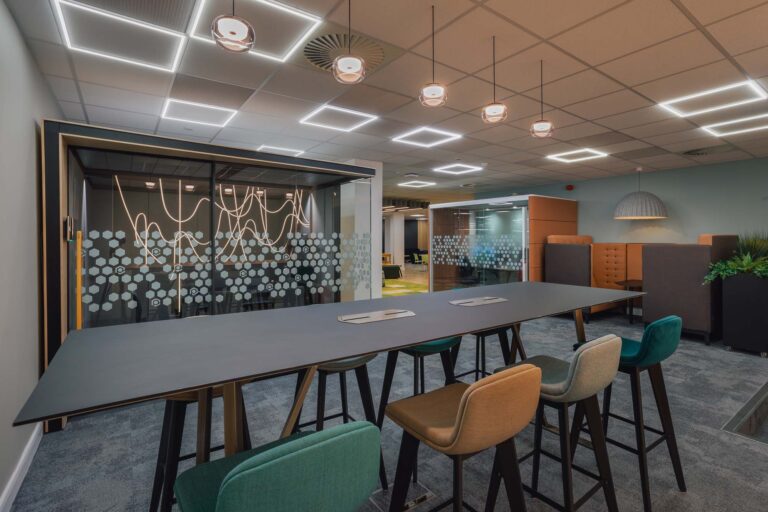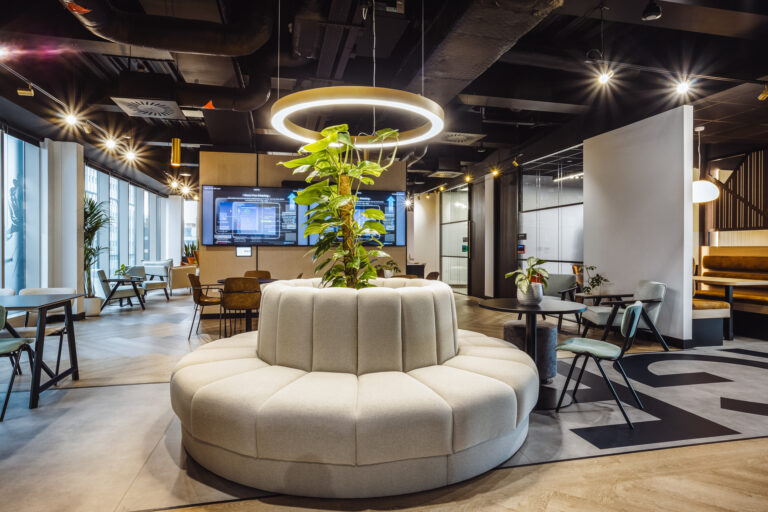
The Workplace Trends Conference 2024
Date
1 October 2024
Read length
5 min
Workplace Consultancy Lead, Jessica Russell, reflects on her recent experience at The Workplace Trends Conference and provides key insights into the topics of discussion from the day.
I recently attended The Workplace Trends Conference at the iconic British Library in London. This event brought together workplace professionals, designers, and thought leaders for a deep dive into the rapidly evolving world of modern workspaces. With a focus on blending physical and digital environments, the conference provided valuable insights into designing flexible, healthy, and productive workplaces that meet the needs of today’s hybrid workforce.
The first talk was from Dr Nicola J. Millard from BT: ‘People, Productivity, Planet: Trends shaping the future of work.’
Nicola delved into how digital technologies are transforming the workplace, particularly in the wake of the pandemic. She asserted that “the workplace is not an office anymore”, challenging the long-standing 9-to-5 work structure. Drawing on psychology, Millard explained that our brains are wired for just 4 hours of deep work daily, making the traditional workday, designed for factory jobs, increasingly outdated in the modern world.
She also discussed presenteeism, where employees feel obligated to be physically present in the office, even when they’re more productive working remotely. Some organisations are even shutting down offices on Fridays due to low occupancy, which is a pragmatic but revealing response to changing work patterns. Others use this day to foster connections by grouping smaller groups of employees together in ‘hot spots’ in the building. This is not only a practical way to save energy in a relatively empty building, but also facilitates interactions that might not occur otherwise.
A bold statement made by Nicola was that hybrid workers are now the most productive, accentuating the need for organisations to rethink the role of the office. “The office is a platform for work,” she said, emphasising that companies must reassess whether their physical spaces are truly serving employee needs. Ultimately, it’s about offering employees a compelling reason to come in—an experience that adds value to both their productivity and work-life balance. She explained that it’s “all about getting value for the commute”.
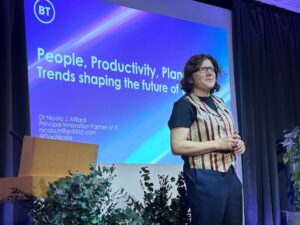
The next talk was from David Laver and Tom Halliwell, from WPP and BDG Architecture, where they discussed designing creative workplace communities. They explained how to create dynamic workplace environments that cater to diverse, multigenerational teams. An interesting trend was highlighted, unique to London, where younger employees are returning to the office in greater numbers than in other international cities. These younger workers view the office as a space for learning, connecting, and socialising, making it crucial to design workplaces that meet their needs while also encouraging older generations to re-engage with in-person work. This interested me as I noted that there is typically an absence of the in-person mentoring that used to be so present in the workplace, as more senior, older generations are opting to work remotely more frequently.
Tom and David honed in on campus principles when designing a workplace, blending work areas with hospitality focused amenities like event spaces, cafes and a library. This links to Claremont’s Destination Office which focuses on workplaces that go beyond traditional office functionality and offer employees an inspirational campus which gives them more than just a place to work.
They echoed Claremont’s view that the experience a workplace brings is just as valuable as the work itself. The office then becomes a place people want to be, rather than have to be. This approach resonates strongly with Claremont’s workplace consultancy model, where understanding the lived experience of employees is central to creating spaces that genuinely meet workforce needs.
Next up was a panel featuring Iain Shorthouse from Paragon Workplace Solution, Jo Cameron who is Head of Recruitment at Devonshire, Natasha Christian, Director of Interior Design at CMI Architecture and Alan Durward, Head of FM and Workplace for the Scottish Parliament. In the panel discussion ‘Mind the (workplace) gap: from boomers to zoomers’ Iain opened with a fascinating statistic that in the UK £9.3bn was spent on workplaces in 2023. He also said that studies suggest that by 2024, Generation Z will outnumber Baby Boomers in the workforce and represent 30% by 2030, so the panel explored whether employers are truly prepared for this transition.
Key statistics revealed that 50% of Gen Z view the office as a crucial factor in accepting job offers, while 34% cite it as a reason for resigning. Additionally, many members of Gen Z identify as “job hoppers,” with 83% open to changing jobs up to ten times before age 35.
Panelists discussed the unique challenges this generation faces, noting that Gen Z is 17% less likely to have a dedicated workspace at home, indicating the need for workplaces to provide focused work areas. With over 50% of Gen Z having neurodiverse needs, it’s essential for workplace design to reflect inclusivity. This highlighted to me the value of the work our design team and workplace psychologist at Claremont do to incorporate DIBE principles into all of our clients’ spaces.
They also emphasized that 54% of remote Gen Z workers believe improved office facilities could enhance their inspiration, underscoring the need for bespoke spaces that foster creativity and project work, beyond mere collaboration areas.
The overarching message was clear: we must invest in today’s workforce while designing for the future. A key takeaway is the importance of integrating Gen Z’s perspectives into the workplace consultancy process to create environments that truly meet their expectations and needs.
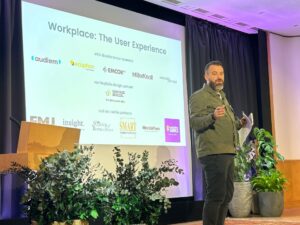
The final talk, ‘The impact of workplace lighting on health and wellbeing’ by Ulysse Dormoy from Atrium and Bob Fosbury and Glen Jeffrey from University College London, delved into the science of light, how it affects our bodies, and its impact on design.
Bob Fosbury went into intricate detail about how the blue light in LED lighting undermines health. He mentioned that inadequate lighting can significantly impact health, linking improper light exposure to conditions like diabetes, Parkinson’s disease, and dementia.
He went on to explain that disruptions to circadian rhythms can lead to sleep disorders and metabolic issues. For instance, studies show that around 50% of office workers report decreased productivity due to poor lighting. To mitigate these effects, it’s essential to design workplaces with adequate natural and artificial lighting, fostering environments that support health and wellbeing.
This made me think about the sheer amount of skyscraper buildings I’d seen in London on my trip with green spaces on the rooftop – this seems to be an emerging design trend which not only looks good, but is practical and also supports our health and wellbeing.
Professor Glen Jeffrey highlighted the vital role of near-infrared light in health, particularly regarding mitochondrial function. His research indicated that insufficient exposure to infrared light can lead to serious health consequences, including higher mortality rates. Mitochondria are essential for regulating ageing and aiding disease recovery.
He also warned of “red-light starvation” due to our indoor lifestyles, stressing the need for design professionals to consider the health implications of lighting choices in indoor environments to promote healthy aging and reduce the risk of various diseases.
The Workplace Trends event was incredibly insightful, prompting me to reflect on how we can incorporate deeper psychological principles into our workplace consultancy and design processes at Claremont. The discussions highlighted that workplace design is an ever-evolving field, constantly adapting to new insights and societal changes. As we move forward, embracing these trends will be crucial in creating environments that not only meet functional needs but also enhance wellbeing and productivity. This dynamic landscape presents exciting opportunities for us to innovate and lead in workplace design.
See how we could help with your new office interior design or office design and build project here
Get in touch
We love nothing better than talking all things workplace and design – got a question, potential project or just need some guidance?
Drop us a note…


